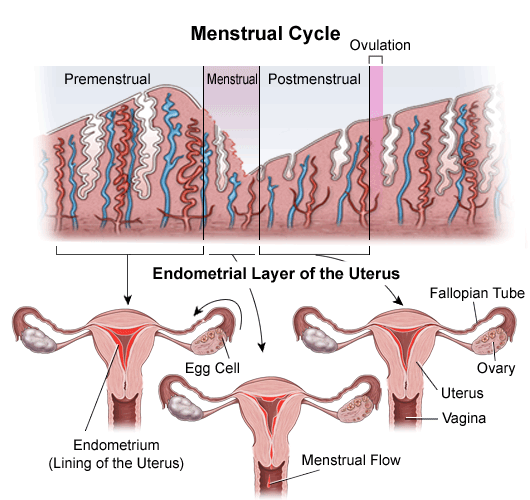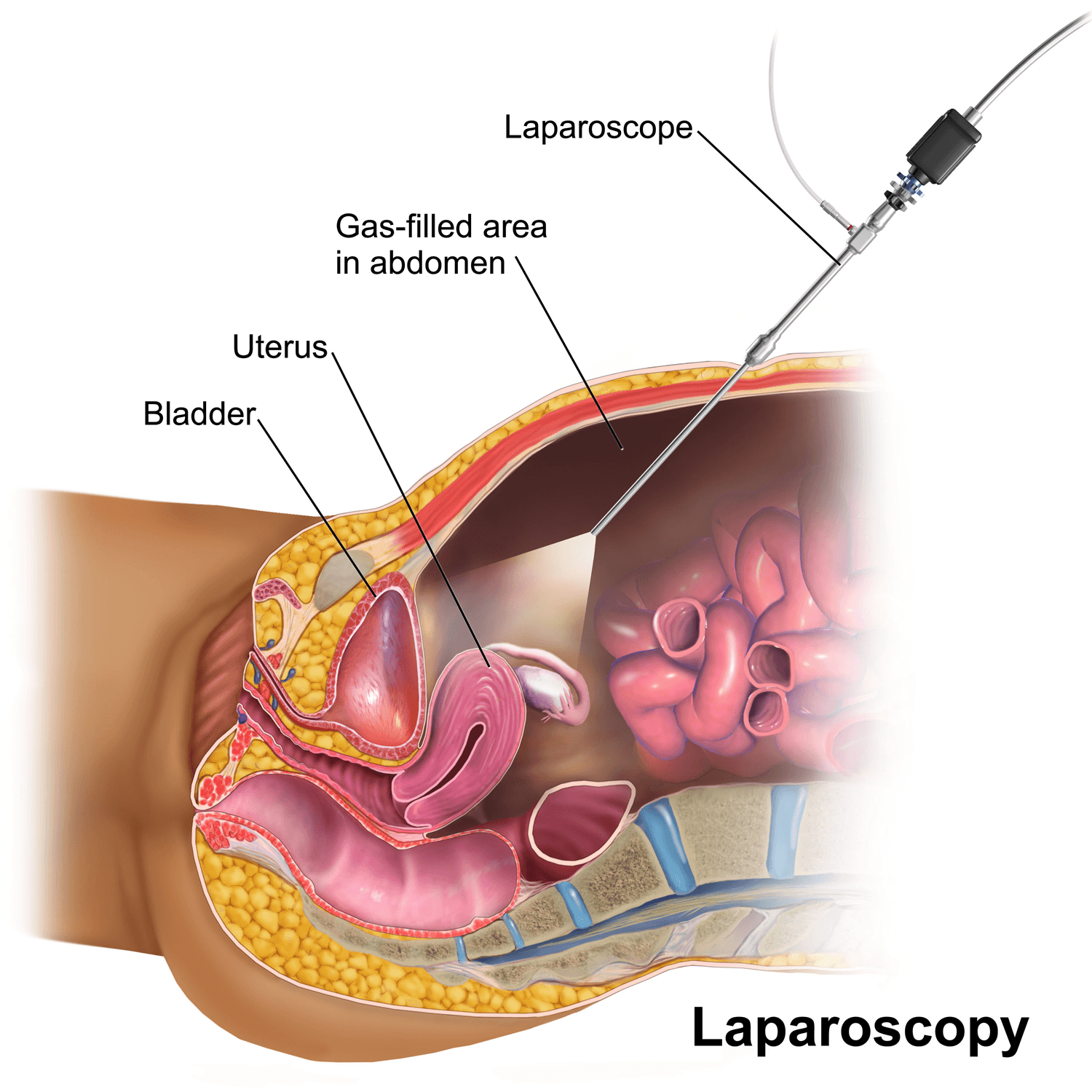Did you know that March is endometriosis awareness month? I have to admit that before I became a pelvic health therapist I didn't even know what this was. Yet millions of women all over the world are affected by this disease. It is estimated that 1 in 10 women has endometriosis. So what is it?
To answer that question we need to go back to biology and talk about cells. There are special cells which line your uterus called endometrial cells. These are the cells which shed once a month if you are not pregnant. These cells respond to estrogen. The diagram below shows how the tissue builds up, then sheds (aka your period), and rebuilds throughout the menstrual cycle.
Endometriosis is when cells similar to endometrial tissue are found outside of the uterus, where it triggers chronic inflammation and can possibly lead to scar tissue formation. This can occur in the bladder, bowel, around the intestines, and in the space between the vagina and rectum.
Who gets it?
This disorder can happen to any woman of any race. It's most common in women between 30-40 years old but it can start as early as with the first period. There are many theories about why women get endometriosis, but at this point they are just that - theories. We do know that there is a genetic link and that you are more likely to get it if a female relative has it (your mom, sister, aunt, etc).
What are the symptoms?
- painful periods
- painful ovulation heavy bleeding on your period
- heavy bleeding
- painful during or after sexual intercourse
- infertility
- fatigue
And real talk ladies? Endo can have a huge impact on a woman's quality of life, affecting general physical, mental, and social well being. In addition, pain can lead to pelvic floor muscle tightness which can cause symptoms such as urinary urgency/frequency, constipation, and pain. So endo is not always the culprit of ALL symptoms that a woman experiences.
The key takeaway here is that your period should not be a painful, crippling experience. It's NOT okay, and you shouldn't accept it as normal. If your healthcare providers brush you off, then please get a second, third, or fourth opinion.
Endometriosis is like a box of chocolates; you never know what you’re gonna get
This Forrest Gump paraphrasing is actually very much appropriate to describe endometriosis. Remember how I said that pelvic floor muscle issues can also occur? Well we know now that symptoms with endometriosis are not always associated with how severe the disorder is. That means a woman who has widespread implants across her body may have very few symptoms while another woman with minimal implants could have severe pain and many symptoms. The disorder is classified from 1-4 (minimal to severe) to describe the spread of the endometrial tissues.
How’s it diagnosed?
Endometriosis is one cause of persistent pelvic pain (i.e. pain in the pelvic area for more than 6 months). Many of the symptoms of endo overlap with other conditions, which makes diagnosis difficult. Currently, the only way to confirm a diagnosis is to perform surgery, known as laparoscopy. A thin tube is placed through the abdomen your belly to look at your organs and confirm the presence of implants, scarring, and/or chocolate cysts. During this procedure, a small sample of tissue can also be collected, to identify endometrial cells which may not have formed visible lesions or cysts.
What’s the treatment?
Currently, there is no cure for endometriosis. There are different treatment options which help women to manage or relieve the symptoms they experience. It is strongly recommended that you work with a team of providers which may include a medical doctor, surgeon, psychologist/counselor, women's health physical therapist, nutritionist, and/or other providers based on your unique needs.
The best treatment for endo is one which takes into account a woman's specific symptoms, limitations on daily life, and her goals. There is no one size fits all cure. Always consult with your healthcare provider about ANY treatment which you try to be sure it is safe and appropriate for you as your medical history and presentation is different than anyone else’s.
Medical treatments
Some women are put on "the pill" to decrease the symptoms. You can also take other medications which may address specific symptoms such as pain, constipation, etc. Be sure to discuss the benefits and possible side effects of any medications you are considering taking.
Surgical treatments for endo include removal of the scar tissue, however this procedure itself can cause scar tissue as well. Other surgical options include hysterectomy (removal of the uterus and ovaries) which may help with the symptoms of pain. It's important to note that none of the surgical options available are considered a cure, and that for some women, the risk of surgery may outweigh the possible benefits. A hysterectomy also immediately puts that woman into menopause.
For some women, pregnancy and menopause significantly decrease the symptoms. It's a myth that menopause "cures" endometriosis because your body still produces estrogen after menopause. Also, if you are taking hormone replacement therapy after menopause, your symptoms may worsen.
Alternative treatments
In the medical community these types of treatments are known as "complementary alternative medicine" however they can provide women with immense relief and help to manage their symptoms. These are treatments which often come with fewer risks and side effects. They include diet changes, exercise, acupuncture, and physical therapy.
I’m a physical therapist so I’m definitely biased towards this is as treatment option to help better understand and manage your symptoms. The benefits of regular exercise and a healthy, whole foods based diet are so many that even if it doesn’t cure the disease, it can help manage other symptoms such as fatigue, anxiety, depression, and improve your overall quality of life.
So what can you do?
Well first, if you identify with any of the symptoms I’ve gone over, get yourself to a doctor! While it can be scary to get a diagnosis of endometriosis, it will also allow you to be a better advocate for yourself. Sadly, many women go to multiple healthcare providers before they receive the diagnosis and have to push for appropriate treatment. No matter your diagnosis, always learn everything you can about what is happening in your body and what you can do- it will help you to make smarter decisions and participate fully in your care.
And spread the word! If you aren’t personally affected by this disease, help spread information to women who may not know about it. Educate others who may not understand the diagnosis of their friend or family member with endometriosis.
Want to get more involved? Visit http://www.endomarch.org/ to join the worldwide march and to find other opportunities to support the women living with endometriosis.












